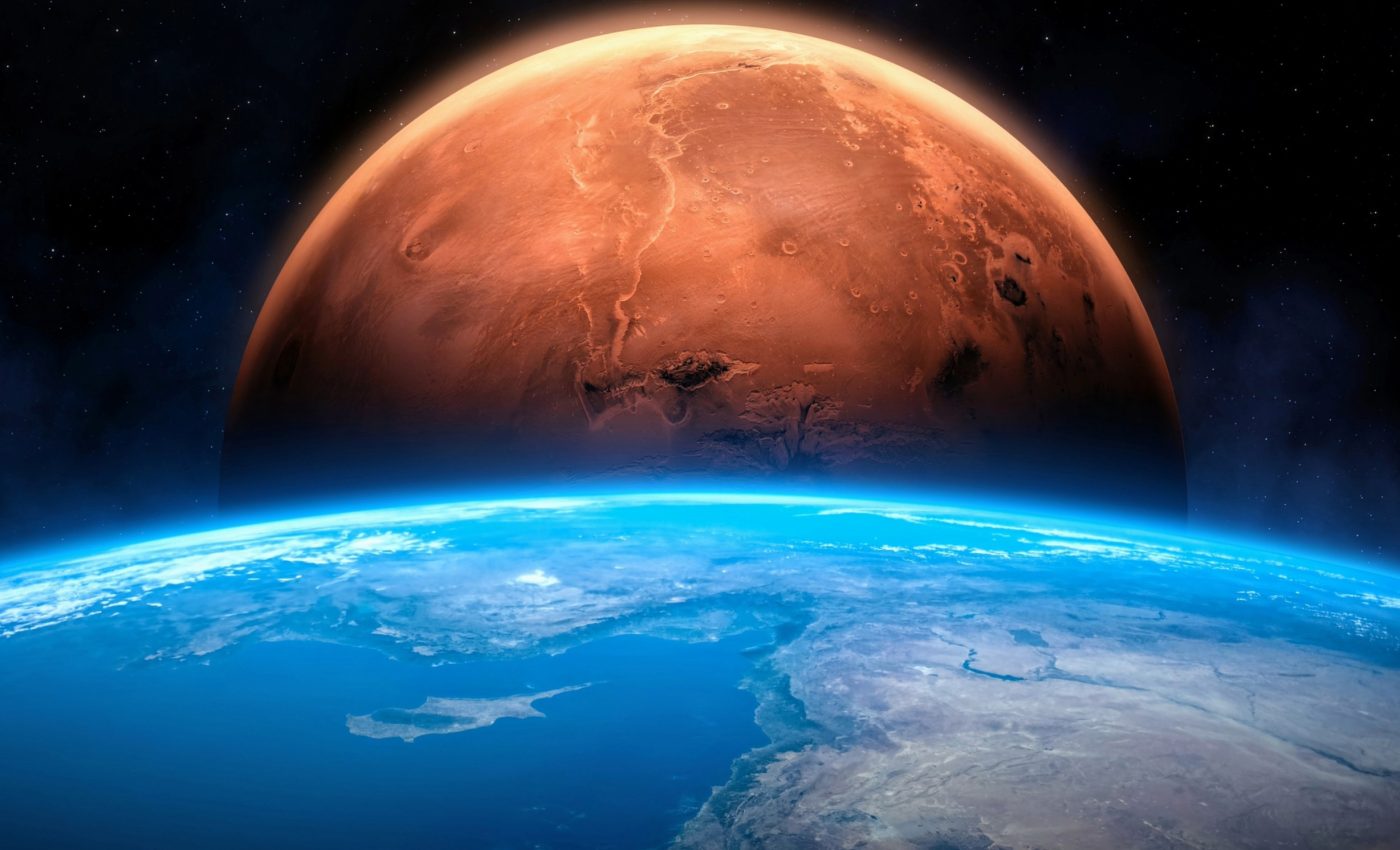
Mars lost most of its water, but where did it go?
Once draped with seas and swathed in rivers, Mars was hardly the barren wasteland that it is today. But just as water can evaporate from your glass on a hot day, it seems Mars’ liquid assets went poof sometime over the last 3 billion years.
Where did the water go? We know that a portion of it went deep underground, seeping into the Martian crust. But the rest of it? Well, that’s the focus of a recent study.
Escape of Mars’ water
Scientists have identified two possible exits for Martian water. One, it could have filtered into the ground and become frozen in time. Two, it could have broken down into atoms and bounced into the great beyond – space. As interesting as the first scenario sounds, let’s focus on the latter one.
John Clarke and his team in the Center for Space Physics at Boston University explain that understanding water’s fate on Mars necessitates tracking the escapee atoms.
By measuring the current escape rate and number of hydrogen atoms fleeing into space, they can trace the history of water on the planet.
Hydrogen in the Martian atmosphere
The water molecules in Mars’ atmosphere are essentially dismantled by sunlight into two types of atoms: hydrogen and deuterium, or “heavy hydrogen.”
Deuterium is a hydrogen atom with an added neutron, which gives it twice the mass and drags it down, making it slower to escape into space.
Over time, as more basic hydrogen escaped and deuterium lagged, the ratio of deuterium to hydrogen in the Martian atmosphere grew. And this growing ratio is a treasure map for scientists, leading them back to the period when Mars was bustling with water.
Hubble meets MAVEN
As instrumental as the MAVEN (Mars Atmosphere and Volatile Evolution) spacecraft’s data was to this study, it had its limitations. It seems even space telescopes have blind spots.
MAVEN struggles to detect deuterium emissions during the lengthy Martian winter, when Mars swings away from the sun.
So, the Hubble Space Telescope swooped in to fill in the gaps, completing the picture of a three-Martian-year cycle (687 Earth days for a single Martian year). With additional data dating back to 1991, Hubble contributed vastly to this study long before MAVEN arrived at Mars in 2014.
A turbulent atmosphere
In our fast-paced world, Mars is also experiencing its share of change. The Martian atmosphere is not the static entity scientists once thought it to be. It’s not just a slow, relaxed diffusion of atoms upwards until they reach an escape altitude – it’s a far more high-octane process.
Mars’ closeness to the sun causes water molecules to speed through the atmosphere, discharging atoms at higher altitudes.
Scientists have found this transformation is so swift that it even needs added energy to explain the changes. This paints a far more dynamic picture of Mars’ atmosphere.
Role of solar wind in Mars’ water loss
One cannot discuss the loss of water from Mars without considering the impact of solar wind. This constant stream of charged particles emitted by the sun plays a significant role in the Martian atmosphere’s evolution.
Unlike Earth, which is protected by its magnetic field, Mars lacks a global magnetic shield, allowing solar wind to directly interact with its atmosphere. These interactions can strip away light gases, including hydrogen, from the atmosphere.
Recent studies have indicated that solar wind has been a persistent thief, exacerbating the loss of water molecules over eons by providing the energy needed to liberate lighter atoms from their atmospheric bonds, further diminishing the planet’s once-thriving liquid reservoirs.
Insights from isotope analysis
As scientists delve deeper into the puzzle of Mars’ water loss, isotope analysis emerges as a powerful tool in their arsenal.
By examining the ratios of hydrogen isotopes – regular hydrogen versus deuterium -researchers can gain insights into the history and volume of liquid water that once circulated on the planet. Isotopic signatures serve as valuable markers, providing clues to environmental conditions when the water was abundant.
This analytical approach not only helps paint a more detailed picture of Mars’ hydrological history but also opens avenues for comparison with Earth, allowing scientists to enhance their understanding of the planetary processes that govern water retention and loss.
As we continue to explore these methodologies, we inch closer to unraveling the mysteries of our enigmatic neighbor.
Piecing together an intergalactic puzzle
Unraveling the historical mystery of water on Mars extends beyond our solar system. It presents invaluable information for understanding the evolution of Earth-sized planets elsewhere in the cosmos.
With astronomers identifying more of these distant planets, Mars, Venus, and Earth serve as models to understand their conditions.
The research appears in the recent edition of Science Advances, published by the American Association for the Advancement of Science.
—–
Like what you read? Subscribe to our newsletter for engaging articles, exclusive content, and the latest updates.
Check us out on EarthSnap, a free app brought to you by Eric Ralls and Earth.com.
—–













